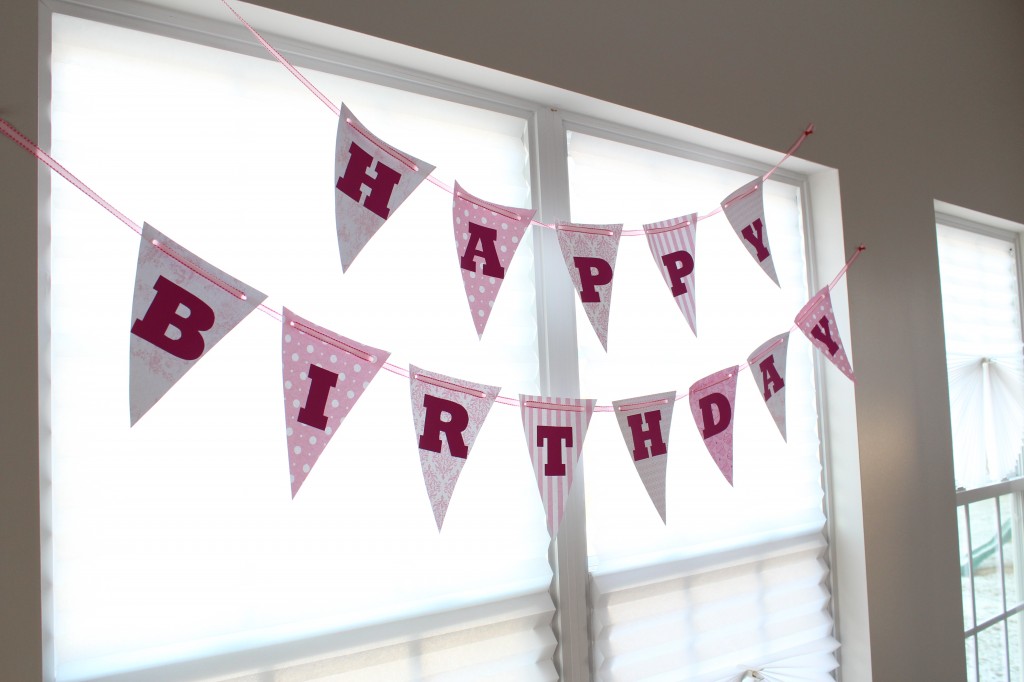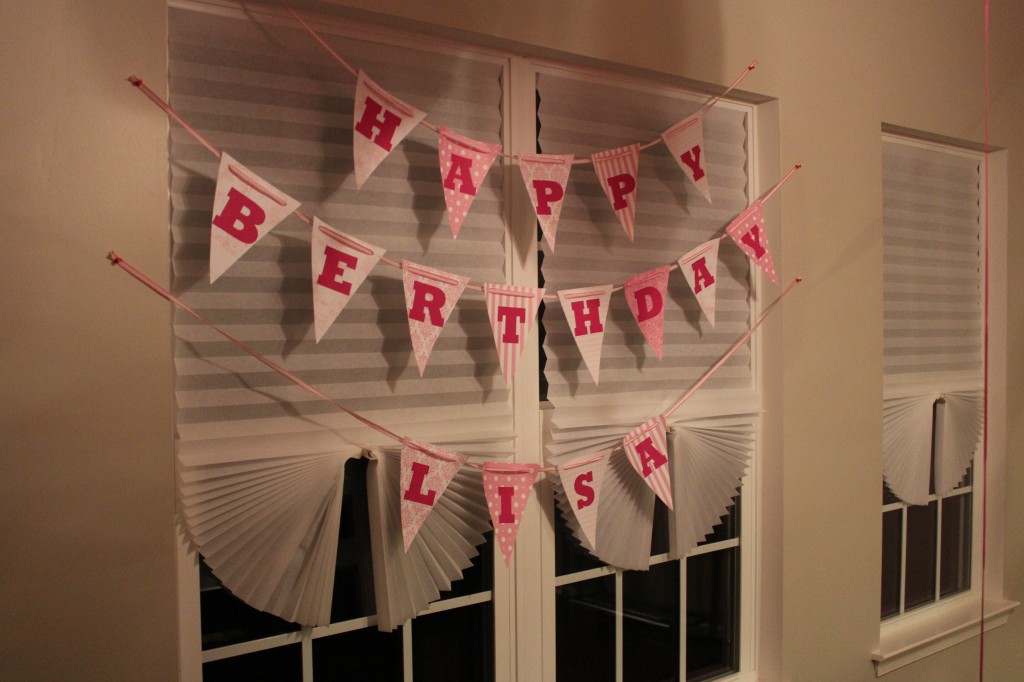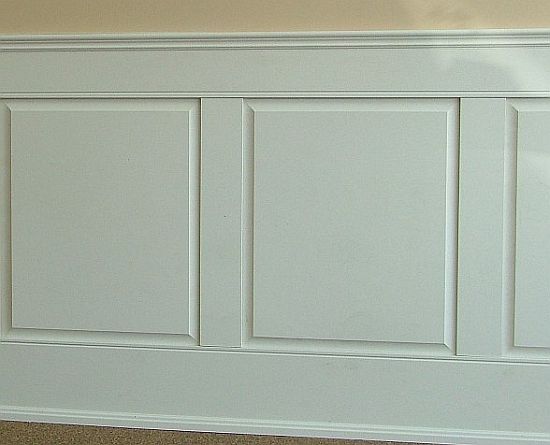In this post, we’re going to look at raised panel wainscoting options, but first Happy Monday everybody! Yesterday was Lisa’s birthday and even though she’s the crafty one, I did manage to pull something out of my hat. Remember this birthday pennant banner we had from our daughter’s first birthday? Yeah, well. It’s still hanging in our morning room.
It also had our daughter’s name hanging below it (which we didn’t show). Now, I wanted to replace her name with Lisa’s but, I was missing another “i.” I used a little “guy” ingenuity and presto…
I totally McGuyver’d this banner, but I can tell you that Lisa was happy to see it and we both had a good laugh.
While we’re waiting for some cabinet hardware to arrive for our cabinet drawers, we’ve been starting to give some more thought to our dining room plans. I think we’re planning on starting soon, but we need to make some decisions first. Here’s the big question at the moment…
Configuration: Are we going with a cope and stick, an applied bolection molding or a simple groove approach? While we don’t HAVE to pick a configuration before we start buying material, it would make me a lot less nervous about starting.
A cope and stick is a router bit joint that the raised panel sits in. Wendy and Alex from Old Town Home used this approach on their stairway. It’s that little curved edge around the panel. The pros: It’s a fairly low cost option and it’s a very classic look. Cons: I’d have to buy a cope and stick router bit. The construction is a little more exacting with less room for error.
The simple groove option is also a pretty classic look. In this option, we lose the curved coped look, but add a bead on the top and bottom pieces. Pros: I already own a beading bit. Cons: I think the vertical pieces are a smaller thickness than the rest of the boards, which means I’ll have to plane them down. That’s a little more work.
The bolection molding option is an applied molding that spans the gap between the raised panel and the rails and stiles. With this option, the center raised panel wouldn’t have to be attached to the rails or the stiles at all. It gets nailed right to the wall. It looks like it adds complexity and depth, but it actually simplifies the process quite a bit. I’ve added a photo of the bolection molding look on a set of front doors since I can’t readily find one for a wainscoting application. Pros: It’s a lot easier overall and it provides some more visual interest. Cons: The molding may be expensive. Very expensive.
So, let me know what you think. Which one would you pick?? We’re all ears.